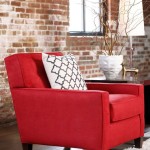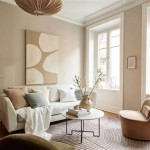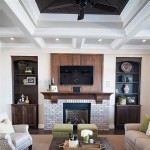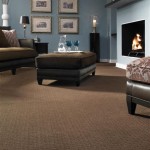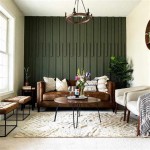Mid-Century Modern Light Fixture Living Room: Illuminating an Era
The mid-century modern (MCM) design aesthetic, prevalent from the mid-1940s to the late 1960s, continues to exert a significant influence on contemporary interior design. Its emphasis on clean lines, organic shapes, and functionality resonates with homeowners seeking sophisticated yet comfortable living spaces. Within this framework, the choice of lighting fixtures plays a crucial role in defining the ambiance and enhancing the overall aesthetic of a mid-century modern living room.
Selecting the right lighting for a mid-century modern living room requires careful consideration of several factors, including the room's size, layout, natural light availability, and the desired atmosphere. Light fixtures from this era are characterized by their minimalist designs, use of materials such as wood, metal, and glass, and a focus on geometric forms. Integrating these elements effectively can transform a living room into a stylish and inviting space that celebrates the iconic MCM design principles.
Key Characteristics of Mid-Century Modern Lighting
Several defining traits distinguish mid-century modern lighting from other design styles. Understanding these characteristics is essential for selecting fixtures that accurately reflect the period and complement the overall aesthetic.
Geometric Shapes and Clean Lines: MCM lighting often features geometric shapes such as spheres, cones, and cylinders. Fixtures are typically characterized by clean, uncluttered lines, avoiding excessive ornamentation or embellishment. This minimalist approach allows the light itself to become a focal point.
Material Palette: Common materials used in mid-century modern lighting include wood (particularly teak and walnut), brushed metal (brass, chrome, and copper), and glass (often frosted or colored). The combination of these materials creates a sense of warmth and sophistication, while also highlighting the natural beauty of each element.
Functionality and Form: MCM design prioritizes functionality, and lighting fixtures are no exception. Many fixtures are designed to be adjustable, allowing users to direct light where it is needed most. At the same time, these functional elements are integrated seamlessly into the overall design, ensuring that form follows function without sacrificing aesthetic appeal. This results in pieces that are both beautiful and practical.
Organic Influences: While geometric shapes are prevalent, mid-century modern design also incorporates organic influences. This can be seen in the curved lines of some fixtures, as well as in the use of natural materials like wood. The juxtaposition of geometric and organic shapes creates a balanced and harmonious aesthetic.
Types of Light Fixtures Suitable for a MCM Living Room
A diverse range of light fixtures can be used to create a well-lit and visually appealing mid-century modern living room. The key is to choose fixtures that complement each other and contribute to the overall design vision.
Pendant Lights: Pendant lights are a versatile option for providing ambient lighting in a living room. Look for pendants with simple geometric shapes, such as spheres or cones, made from materials like glass, metal, or a combination of both. Cluster pendants, where multiple lights are hung together at varying heights, can create a dramatic and eye-catching focal point.
Floor Lamps: Floor lamps are an excellent way to add targeted lighting to specific areas of the living room, such as a reading nook or seating area. Arc floor lamps, with their long, sweeping curves, are a quintessential mid-century modern design element. Tripod floor lamps, featuring three legs made from wood or metal, are another popular choice. These lamps not only provide illumination but also serve as sculptural elements within the space.
Table Lamps: Table lamps are ideal for adding accent lighting to side tables, consoles, and bookshelves. Choose lamps with ceramic bases, wooden accents, or metal shades. Mid-century modern table lamps often feature simple, elegant designs that complement the surrounding furniture and décor. The use of colored glass lamp bases provides option for adding a pop of color to the space.
Wall Sconces: Wall sconces are a space-saving option for providing ambient or accent lighting. They can be used to highlight artwork, illuminate hallways, or create a cozy atmosphere in a seating area. Look for sconces with simple, geometric shapes and materials that coordinate with other lighting fixtures in the room.
Chandeliers: While chandeliers might seem more traditional, there are many mid-century modern chandeliers that fit perfectly within the aesthetic. These chandeliers often feature Sputnik-style designs with multiple arms extending from a central sphere, each ending with a light bulb. The use of metal and glass creates a striking and sophisticated look.
Track Lighting: For those looking for more directional and adjustable lighting, track lighting can be a great option. Choose a track lighting system with simple, minimalist track heads that complement the mid-century modern aesthetic. This can be a good option for highlighting artwork or other architectural features.
Integrating Lighting into the MCM Living Room Design
Effective lighting design involves more than just selecting individual fixtures. It requires careful planning to create a layered lighting scheme that meets the functional needs of the space and enhances its aesthetic appeal.
Layered Lighting: A well-designed living room should incorporate multiple layers of lighting, including ambient, task, and accent lighting. Ambient lighting provides overall illumination, while task lighting is focused on specific activities, such as reading or working. Accent lighting is used to highlight artwork, architectural features, or other decorative elements. By combining these three layers, you can create a dynamic and visually interesting lighting scheme.
Consider the Room's Natural Light: The amount of natural light available in the living room will influence the type and placement of artificial lighting. If the room is filled with natural light, you may need less ambient lighting and can focus on task and accent lighting. Conversely, if the room receives little natural light, you will need to rely more on artificial lighting to create a bright and inviting atmosphere.
Placement and Positioning: The placement of light fixtures is crucial for achieving the desired effect. Consider the layout of the furniture and the activities that will take place in different areas of the room. Place task lighting where it is needed most, such as near a reading chair or desk. Use accent lighting to highlight focal points, such as artwork or a fireplace. And consider dimmer switches for lamps and overhead fixtures to allow for adjustment depending on the time of day and desired mood.
Color Temperature: The color temperature of the light bulbs can also impact the overall atmosphere of the living room. Warmer color temperatures (around 2700K) create a cozy and inviting atmosphere, while cooler color temperatures (around 5000K) produce a brighter and more energizing light. For a mid-century modern living room, a warmer color temperature is generally preferred to create a welcoming and comfortable space. The choice between LED and incandescent bulbs is also a relevant consideration, with LED bulbs being more energy efficient and longer lasting. However, some people prefer the quality of light that is emitted by incandescent bulbs.
Balance Style and Function: When selecting lighting fixtures, it is important to strike a balance between style and function. Choose fixtures that complement the mid-century modern aesthetic while also providing the necessary amount of light for the space. Don't be afraid to mix and match different types of fixtures, but ensure that they all work together to create a cohesive and harmonious design.
Pay Attention to Scale: Scale is another important factor to consider when selecting lighting fixtures. Choose fixtures that are appropriately sized for the room and the surrounding furniture. A large chandelier might overwhelm a small living room, while a small table lamp might get lost in a larger space. Consider the proportions of the room and select fixtures that are visually balanced.
By carefully considering these factors, you can create a mid-century modern living room that is both stylish and functional. The right lighting can transform the space, creating a warm and inviting atmosphere that celebrates the iconic design principles of this influential era.

Mid Century Lighting Lightfixturesusa

Caserti Mid Century Modern 6 Light Dna Chandelier Fixture Linea Lighting And Affordable Residential

Magic Home 8 Light Modern Sputnik Chandelier Brass Mid Century Branch Crystal Pendant Ceiling Fixture For Dining Living Room Mh Y 020242 The

Mid Century Lighting Lightfixturesusa

Best Midcentury Modern Lighting Lightology

Midcentury Modern Lighting Sources Atomic Ranch

6 8 10 Lights Mid Century Modern Ceiling Light Black Rc Remote Dimming

Curvili Mid Century Chandelier 55

Mid Centry Modern Lighting Design Tcp Features Fixtures

Mid Century Modern Kitchen Island Lighting Fixture Wood Chandelier Pendant Light Ebay



